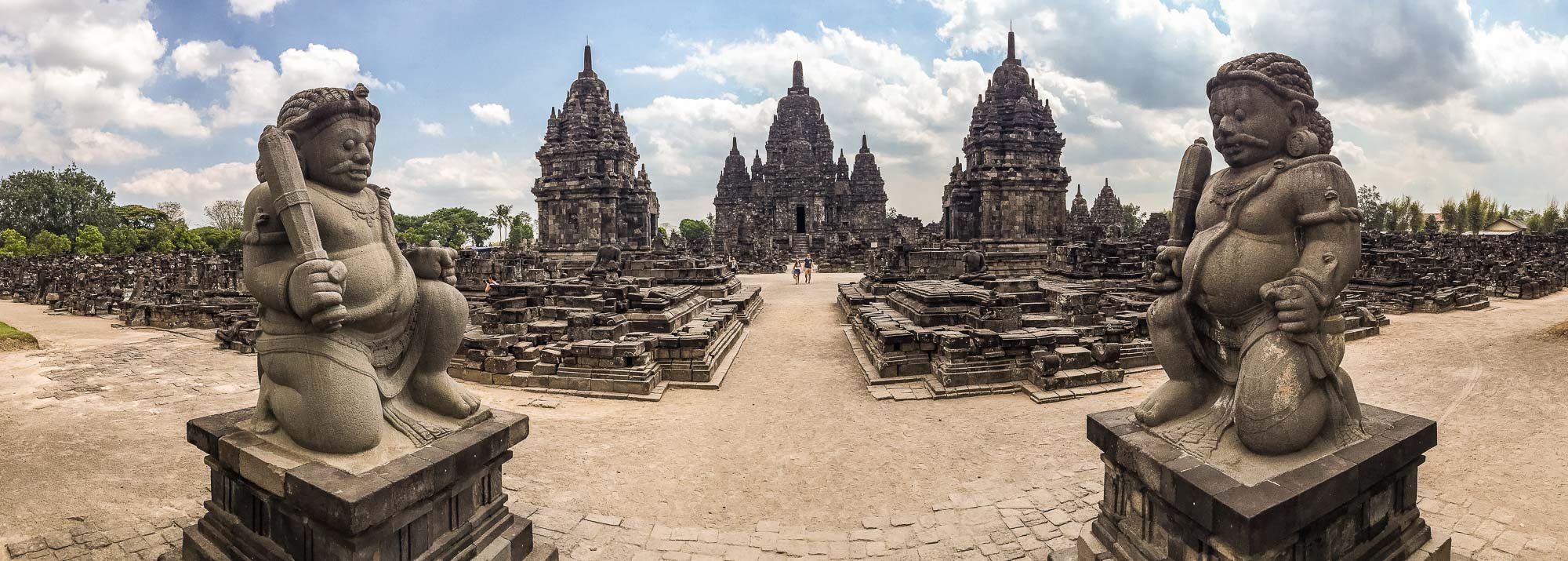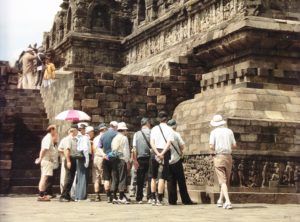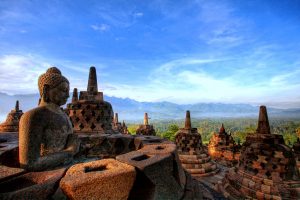Giant Mandala Named Sewu Temple

The Complex of Sewu Temple is located inside the complex of Prambanan Temple, exactly in the northern part of the complex. According to the inscriptions that have been found, this temple was built at the same time while building Kalasan temple in 782 AD, according to the Kelurak inscription. Meanwhile, according to another inscription, Manjushrigriha, this temple was expanded in 792 AD. So it can be concluded that the making of this temple in the beginning before the expansion. If looked at the architectural design of the building Sewu Temple, The temple has a possibility to inspire the design of Plaosan and Prambanan Temple.
The name of the temple itself is based on the number of temples located in the complex. Sewu which means a thousand in the Javanese language describes the number of temples that actually consists of only 249 temples, with one main temple and 240 perwara temples. The main temple is in the middle with its four sides surrounded by flanking temples and ancillary temples. On some inscriptions, are written that Sewu Temple was built as a giant Mandala, with the geometry of the building illustrated the universe. In this Mandala, Vairocana Buddha is placed in the middle and surrounded by five tathagatas (personification from the quality of a Budha), namely Akshobhya, Ratnasambhava, Amitabha, and Amogasiddhi.
Sewu temple has four gates on the front side of the outer court which each part is guarded by a pair of Dwarapala statues that are facing each other. In the inner court also has four gates with a pair of Dwarapala statues on each door. The four flanking temples that lie outside the main wall are divided by the east, west, south and north sides. Each part has a name, that is Bubrah Temple on the south side, Asu Temple on the east side, Kulon Temple on the west side, and Lor Temple on the north side. Currently only temple Bubrah and Asu temple that can be enjoyed by visitors, while Kulon Temple and Candi Lor just leaving only with stone composition.
The uniqueness of this temple is also located in its location which is in complex of Prambanan temple. Sewu temple is a Buddhist temple while Prambanan temple is the largest and complex of Hindu temple. This indicates that in ancient times the Hindus and Buddhists were very harmonious and lived together. Historically, Sewu Temple was built during the reign of King Panangkaran of the Sanjaya dynasty. This temple was later expanded during the reign of Rakai Pikatan who later married Hindu descendants namely Pramodhyawardani of the Syailendra dynasty. This marriage then successfully united both two great dynasties at that time, the Sanjaya dynasty and Syailendra dynasty.
Photo : http://www.jusmedic.com/2016/04/temples-near-yogyakarta/


